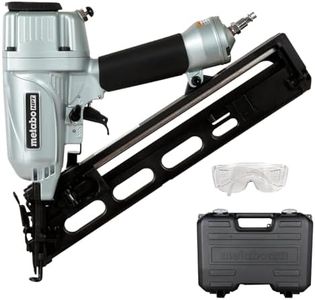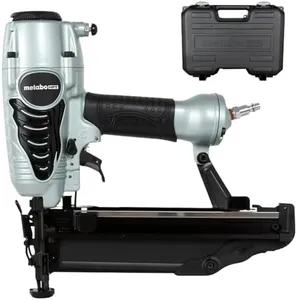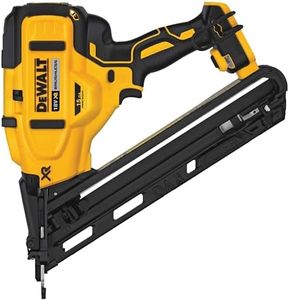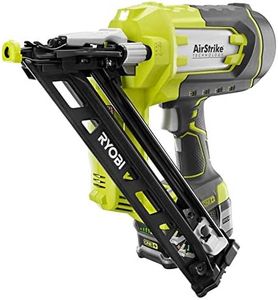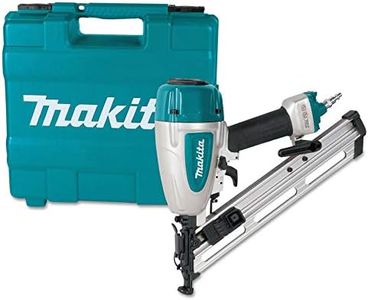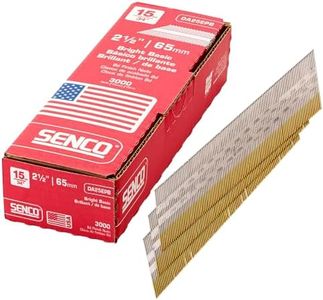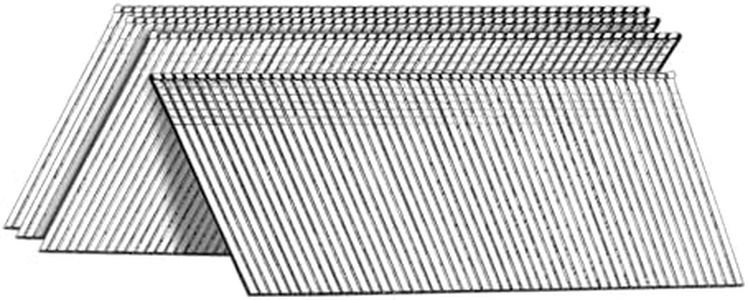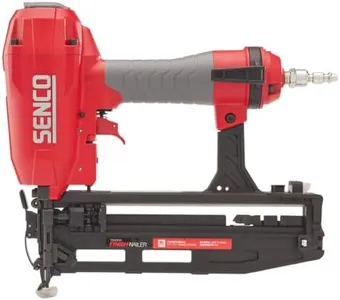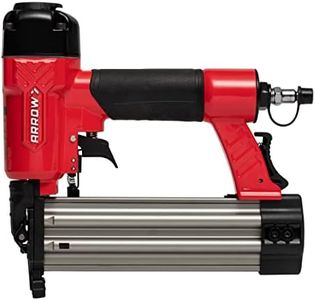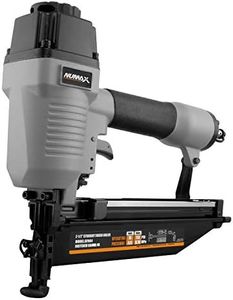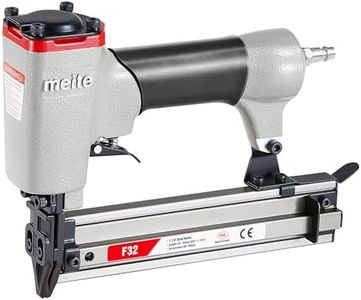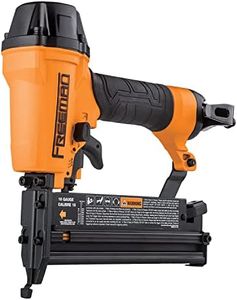We Use CookiesWe use cookies to enhance the security, performance,
functionality and for analytical and promotional activities. By continuing to browse this site you
are agreeing to our privacy policy
10 Best Pneumatic Finish Nailers
From leading brands and best sellers available on the web.By clicking on a link to a third party's website, log data is shared with that third party.
Buying Guide for the Best Pneumatic Finish Nailers
Choosing the right pneumatic finish nailer is all about matching the tool to your projects and comfort needs. Pneumatic finish nailers are powered by compressed air and are widely used for trim work, cabinetry, molding, and other woodworking projects. To get the best results, consider where and how you will use the nailer, the kind of materials you'll be working with, and what features help you work safely and efficiently.Nail GaugeThe nail gauge tells you how thick or thin the nails are that your nailer will shoot. Thinner gauges (higher numbers like 16 or 18) are designed for more delicate trim, minimizing visible nail holes, while lower numbers (thicker nails, such as 15-gauge) are more robust and better for heavier work. To pick the best nail gauge, think about the projects you plan to tackle. For detailed interior trim, an 18-gauge nailer often works well. For larger, heavier trim, a 15- or 16-gauge model offers greater holding power.
Nail Length CapacityThis spec tells you the range of nail lengths the nailer can accept. Shorter nails are ideal for thinner materials, while longer nails are needed for thicker pieces. Nailers typically handle a range like 1 to 2.5 inches. If you often switch between tasks with different material thicknesses, look for a nailer that accepts a broader range of lengths. If your work is very specialized, choose one that matches the usual length you need.
Magazine CapacityMagazine capacity refers to how many nails the tool can hold at one time. A higher capacity means less stopping to reload, which is helpful for larger jobs. Small-capacity magazines, on the other hand, keep the tool lighter and easier to handle for fine, precise work. When choosing, consider if you’d prefer a lighter tool for short bursts or if you’d rather reload less during longer jobs.
Operating Pressure (PSI)This is about the amount of air pressure the nailer needs to work correctly, usually listed as a range (e.g., 70–120 PSI). Most home compressors can manage the typical needs of finish nailers. When buying, make sure your air compressor can supply the required pressure. This helps ensure the nailer fires nails consistently and safely for the types of wood and fasteners you’ll use.
Weight and ErgonomicsWeight and ergonomics affect how comfortable and easy the nailer is to use, especially during long periods. A lighter nailer is easier to maneuver, particularly overhead or in tight spots, but a heavier nailer might offer a sturdier build. Check for comfortable grips or adjustable handles too. If you expect to use the nailer for hours at a time or in awkward spaces, prioritize a lightweight, well-balanced design.
Exhaust DirectionThe exhaust direction refers to where the nailer directs the air when firing a nail. Adjustable exhaust ports are helpful, as they let you channel that air away from your face or work area. This is especially useful indoors, where dust or debris could become an issue. If you’re concerned about comfort or working in varied spaces, look for a tool with adjustable exhaust.
Jam Clearing MechanismOccasionally, nails may jam in the nailer, and a good jam clearing mechanism lets you resolve this quickly and safely, often without extra tools. This feature is especially important for those who value efficiency or are newer to pneumatic tools. If you want to avoid downtime, consider nailers with tool-free jam clearing options.
